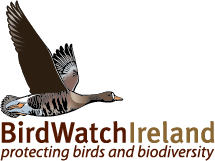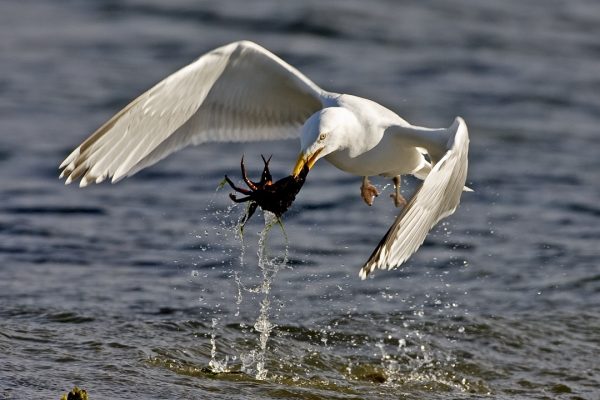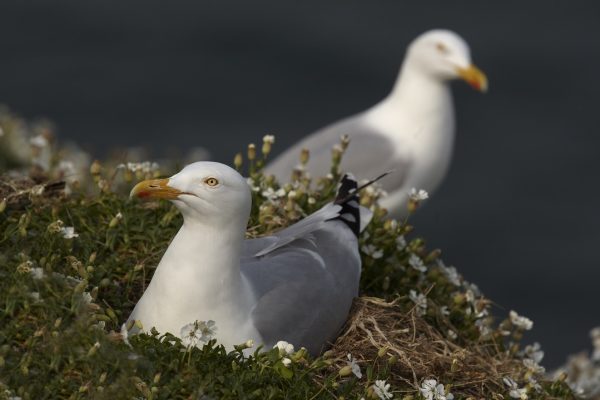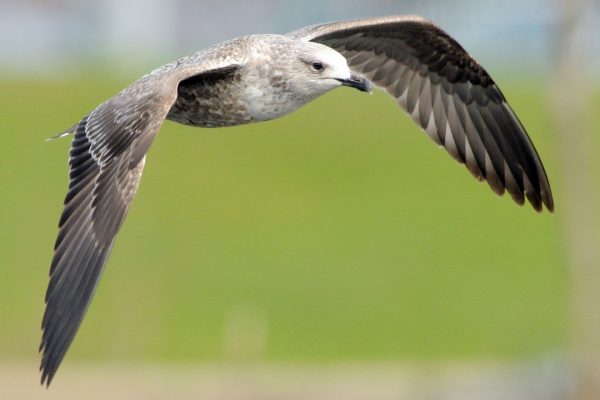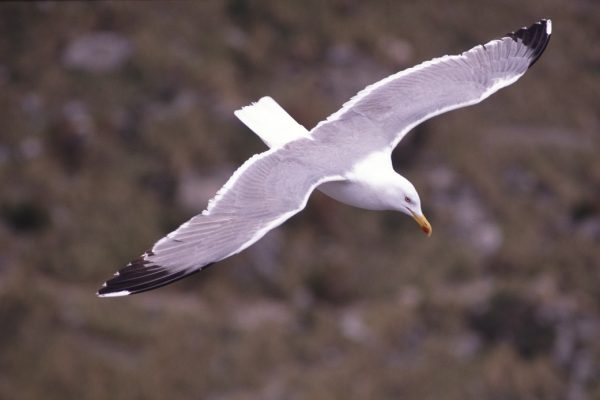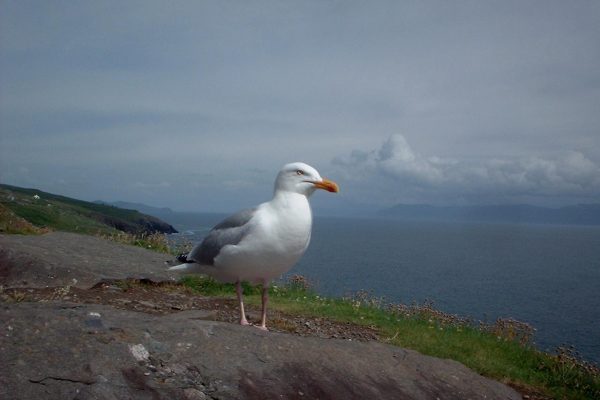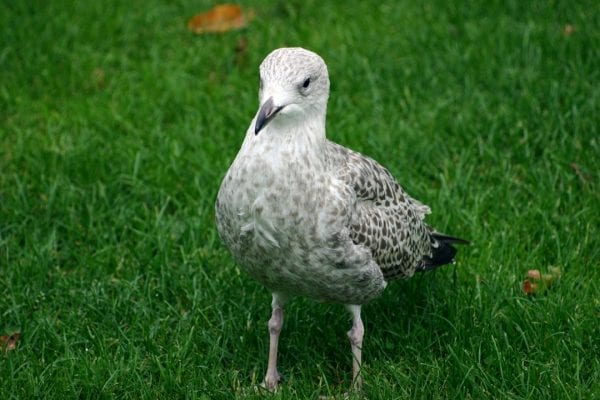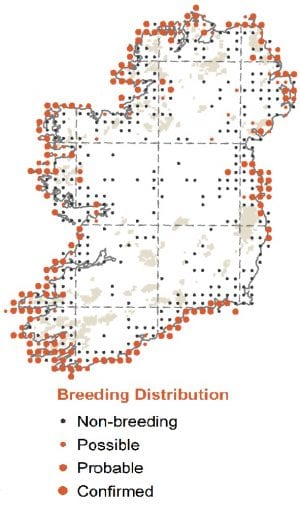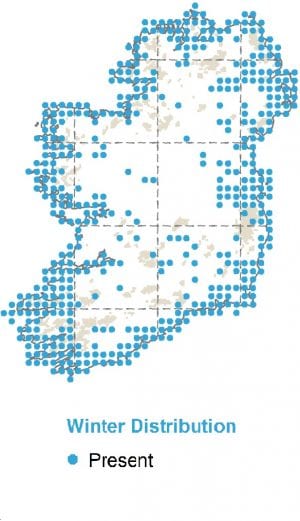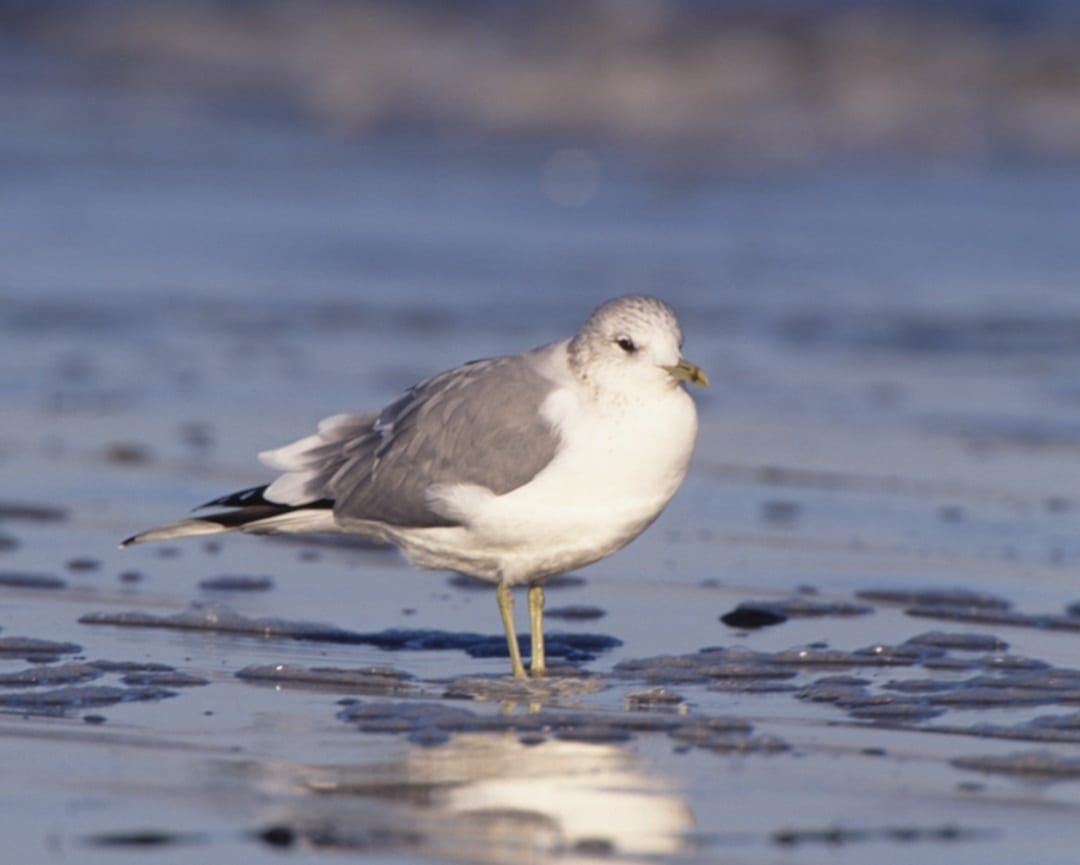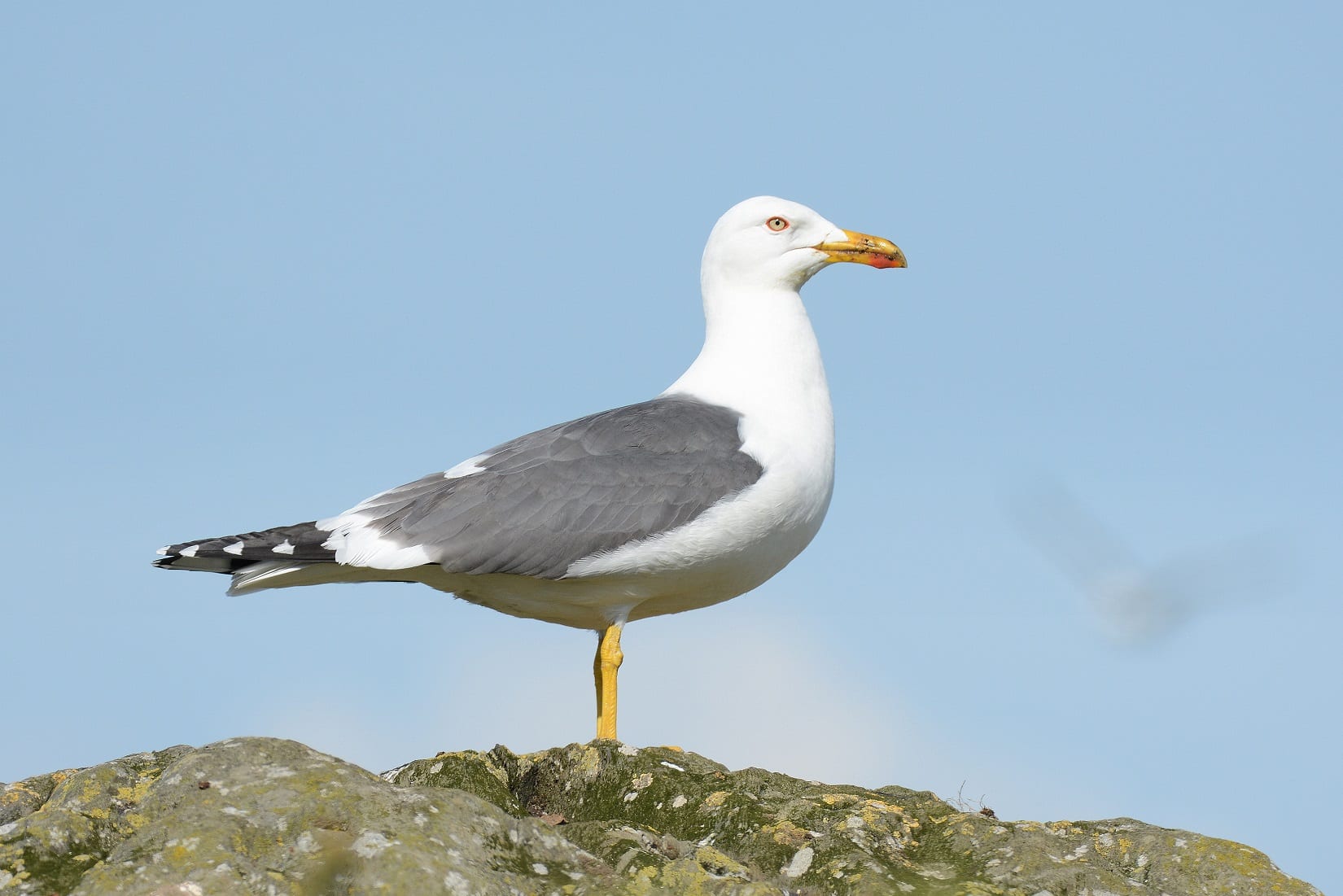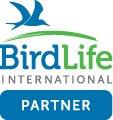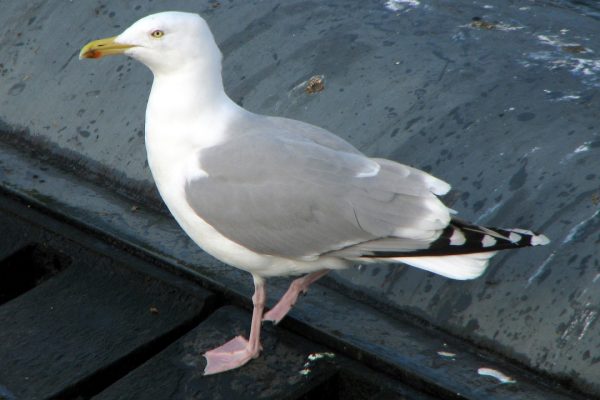
Herring Gull
| Irish Name: | Faoileán scadán |
| Scientific name: | Larus argentatus |
| Bird Family: | Gulls |
amber
Conservation status
Conservation status
Status
Resident along all Irish coasts, with some interchange between Ireland and west Britain.
Identification
A large gull, which in adult plumage has light grey upperwings, showing black tips with white 'mirrors' (white at the very tips surrounded by black); the rest of the plumage is white. Similar to Common Gull in colouration, but separated by size, Common Gull is much smaller and shows larger, more conspicuous white 'mirrors' at the wing tip as an adult. Adult birds have heavy yellow bills with a orange spot on the lower bill, the head is pure white in the summer and streaked in the winter. The legs are pink at all ages. Herring Gulls have four age groups and attain adult plumage after three years when they moult into adult winter plumage. Juveniles are brown with finely patterned feathers which fade in the first year, especially the wing and tail feathers which are retained through the first summer. Juvenile and first year birds, do not have any plain grey adult like feathers in the upperparts and can be difficult to tell apart from immature Lesser and Great Black-back Gulls. Grey in the upperparts develops from the second winter onwards, initially mostly in the mantle and back and becomes more extensive over the wings as the bird moves towards maturity. Younger immature birds have a dark terminal tail band which becomes less prominent as they get older, adult birds lack this band completely.
Voice
Calls are strident and loud.
Diet
Both predator and scavenger, often feeds on the coast and follows fishing boats and uses landfill sites.
Breeding
Breeds in colonies around the coast of Ireland and also inland in Co. Donegal and Co. Galway. The biggest colony in Ireland is on Lambay island off Co. Dublin with over 1,800 nests.
Wintering
Widespread on the coast and inland.
Monitored by
Wintering birds are monitored through the Irish Wetland Bird Survey. Breeding seabirds are monitored through breeding seabird surveys carried out every 15-20 years.
Blog posts about this bird
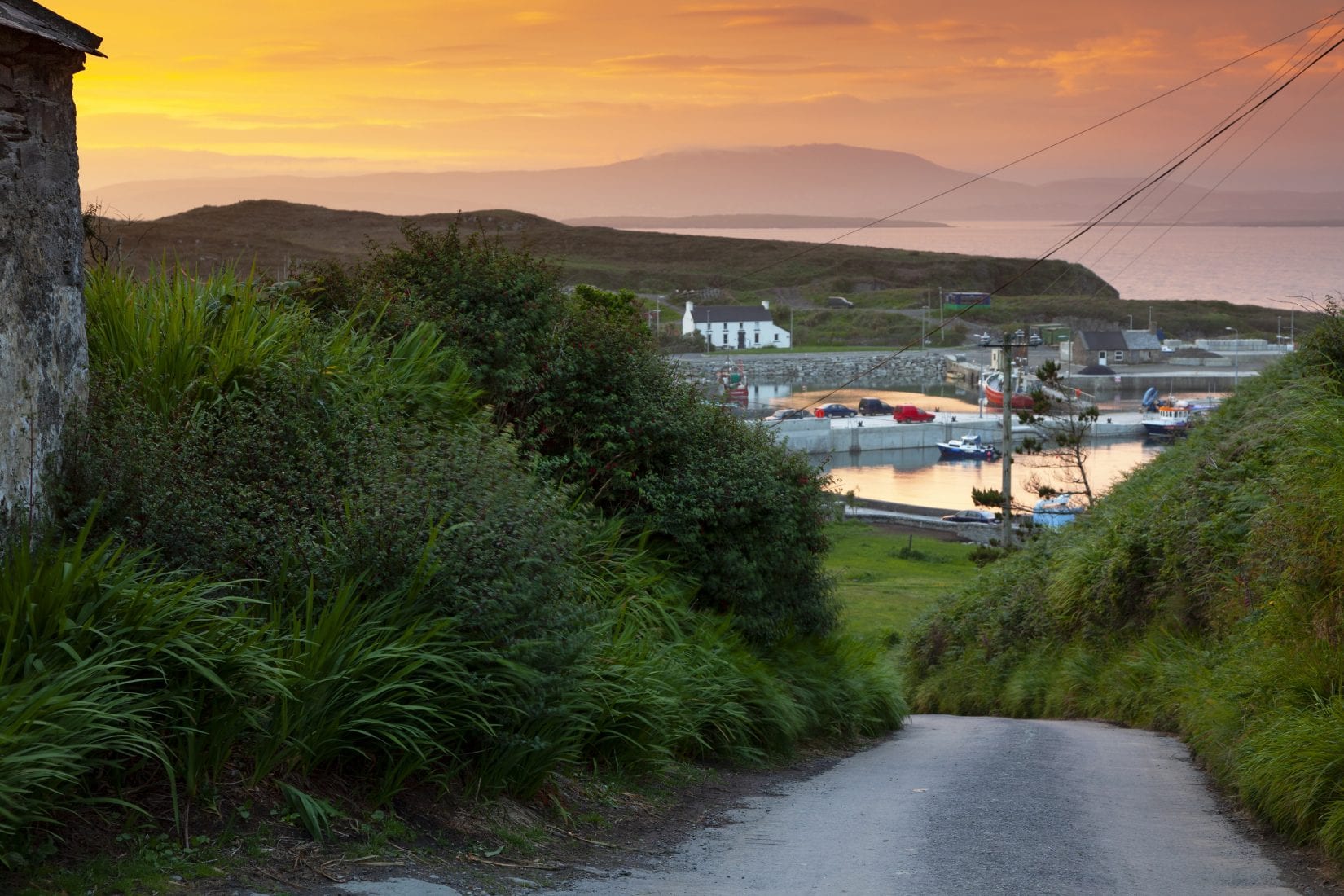
Spread your wings with a stay at Cape Clear Bird Observatory in 2024
Think of an island of just under 6km² in size and you would be forgiven for believing that your options for things to see and do are limited.
Yet, on making the crossing from Baltimore to Cape Clear Island in County Cork, you will pass through a portal to endless natural wonders.
Take it from Steve Wing. 25 years since first moving to the island to take up the reins as Cape Clear Bird Observatory’s Wildlife Officer, he is still making discoveries.
“There are all sorts of things to discover here. It is a great place to gain enjoyment and knowledge about any aspect of nature,” he said. “When it comes to the natural world, the learning is endless. If you take up birdwatching, you will by default start asking more questions. ‘What’s that moth or butterfly? ‘What’s the tree they’re feeding in?’ You want to follow on. The more you learn about one thing, the more you want to learn about another.
We don’t just do birding here; we do all sorts of things. I’m still learning about moth identification, for example. That’s as much a lesson for me as anyone else.”




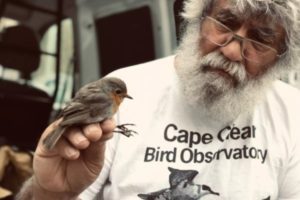
Steve Wing
As the home of the Republic of Ireland’s only bird observatory and one of the best places in Europe to observe migratory seabirds and rarities, Cape Clear is a magnet for birdwatchers all around Ireland, and beyond. But what is it about this island that makes it such a haven for bird life? “It’s location, location, location basically,” Steve responded. Indeed, Cape Clear's remote island location on the southwestern coast and mild climate make it a hot spot for an abundance of species. Many of those who visit Cape Clear to birdwatch today are following in the footsteps of the “pioneers” who founded the Observatory, as Steve explained. On a visit to Cape Clear in 1959, a group of young birdwatchers from England discovered many rarities and noted the potential Cape Clear Island offered for observing bird migration. Owing to their enthusiasm and a subsequent anonymous donation, the wheels were set in motion for the establishment of the Bird Observatory we know today. In 2000, Cape Clear Bird Observatory came under the ownership of BirdWatch Ireland, just two years after Steve took up his post. You can read more about the history of Cape Clear here.
Steve Wing Cape Clear Wildlife Officer in doorway of CCBO. Photo: Brian Caffrey
Steve’s work at Cape Clear varies, depending on the time of year. Between April and September, he is kept busy running his extremely popular “Wildlife Weekends” – short and interactive courses suitable for the beginner birder right up to the seasoned twitcher. “When I am doing the courses, I am 100 percent with the people from the minute I wake up to the moment I go to bed. Whatever I am doing, they will get a chance to do. I take them for walks, do some ringing with them and tell them more about birds and Cape Clear in general. You're not sitting in a classroom, you're walking and talking and learning all the time,” he explained. “Participants will learn how to identify birds by looking at things like bill shape, the size of the bird, the colour, what they’re feeding on and their location. They will learn some basic birdwatching knowledge and a little bit of fieldcraft, and, of course, get plenty of enjoyment. There is the social side to the weekend, too. Every evening, we go to the pub and discuss what has happened during the day. If people leave here happy, have had a good time and want to come back, it’s a success in my eyes.” In addition to Steve’s Wildlife Weekends, Cape Clear also plays host to the week-long “Seabirds to Songbirds” courses led by Dick Coombes. Through these courses, which will take place on two dates in 2024, participants will gain an insight into the world of migration and the joys of sea-watching.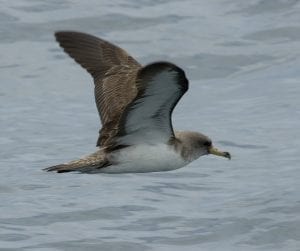
Cory's Shearwater. Photo: Artie Kopelman
When the guests have packed their bags and set sail for the mainland, Steve returns to his work on the island. There’s no such thing as a typical day, however, as his activities tend to shift with the changing weather and seasons. In late summer and early autumn, he might sit on the cliffs and monitor the seabirds – an activity known as seawatching. If the weather is calm and there are birds around, he might open the nets to do some ringing. To date, approximately 23,000 individual birds have been ringed on Cape Clear, Steve said, adding that it is a job he feels extremely lucky to carry out. “It is a total privilege to be able to hold on to a bird and show people the topography of it, how the feathers work and why the bill shape liked that. It is a lot easier to see close up. To see the look of awe on kids’ faces when they see a Robin or Blue Tit is fantastic. They're amazed,” he said. “Ringing itself is wonderful always but it’s always nice to catch something that’s rare, like a Golden Oriole, for example. Anything you catch that you're not expecting to is a bonus.” Information gathered from ringing and monitoring work has taught us a lot about how bird populations are faring on the island. For example, as Steve explained, Herring Gull numbers on the island have declined dramatically in recent years, likely due to a combination of factors including overfishing. Meanwhile, Fulmar numbers have risen as many have taken over former Herring Gull breeding sites. “Song Thrushes seem to be doing incredibly well around here, whereas around most of the rest of Europe they are declining. Maybe it is the fact there aren’t so many pesticides being used here. We don’t know for sure,” continued Steve. “We seem to be getting more Mediterranean seabirds also. Last year, I had a record year for Cory Shearwaters for the whole south coast of Ireland. We had tens of thousands coming through.” Ringing also gives us information about migration routes. We now know that some of the birds recorded on Cape Clear have travelled a tremendous distance to be there.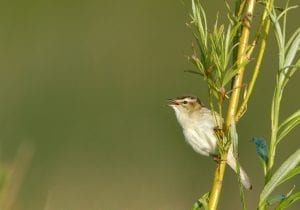
Sedge Warbler. Photo: Clive Timmons.
“I caught three adult Sedge Warblers in 2017 and up until three years ago, I was still catching two of the three when they returned to Cape after wintering in Gambia and Senegal. We did a very quick rough estimate on Google Maps and realised that these birds had pretty much done a circumnavigation of the planet in their lifetimes. It's an amazing feat for these tiny birds the size of Robins.” While Steve’s Wildlife Weekends are now fully booked for 2024 and only a limited number of places remain on the “Seabirds to Songbirds” courses, it is still possible to visit Cape Clear and experience the natural wonders that it holds. From April 8th, members of the public can take the boat from Baltimore and stay in the Bird Observatory’s self-catering style accommodation in shared dorms. For more information and to book, visit the BirdWatch Ireland website. Regardless of whether you visit Cape Clear for a course or on a self-guided trip, alone or with friends, you are sure to depart with additional knowledge and a renewed appreciation for Ireland’s bird life. “Capers say Ireland is the island off Cape and that this is the best place in Ireland to be. If you visit, you will learn a lot about the birds, you will learn more about the general art of birdwatching and hopefully, you will get to appreciate what a beautiful place Cape is. Come with an open mind. You are sure to learn something.” Find our more about and book a Cape Clear course in 2024.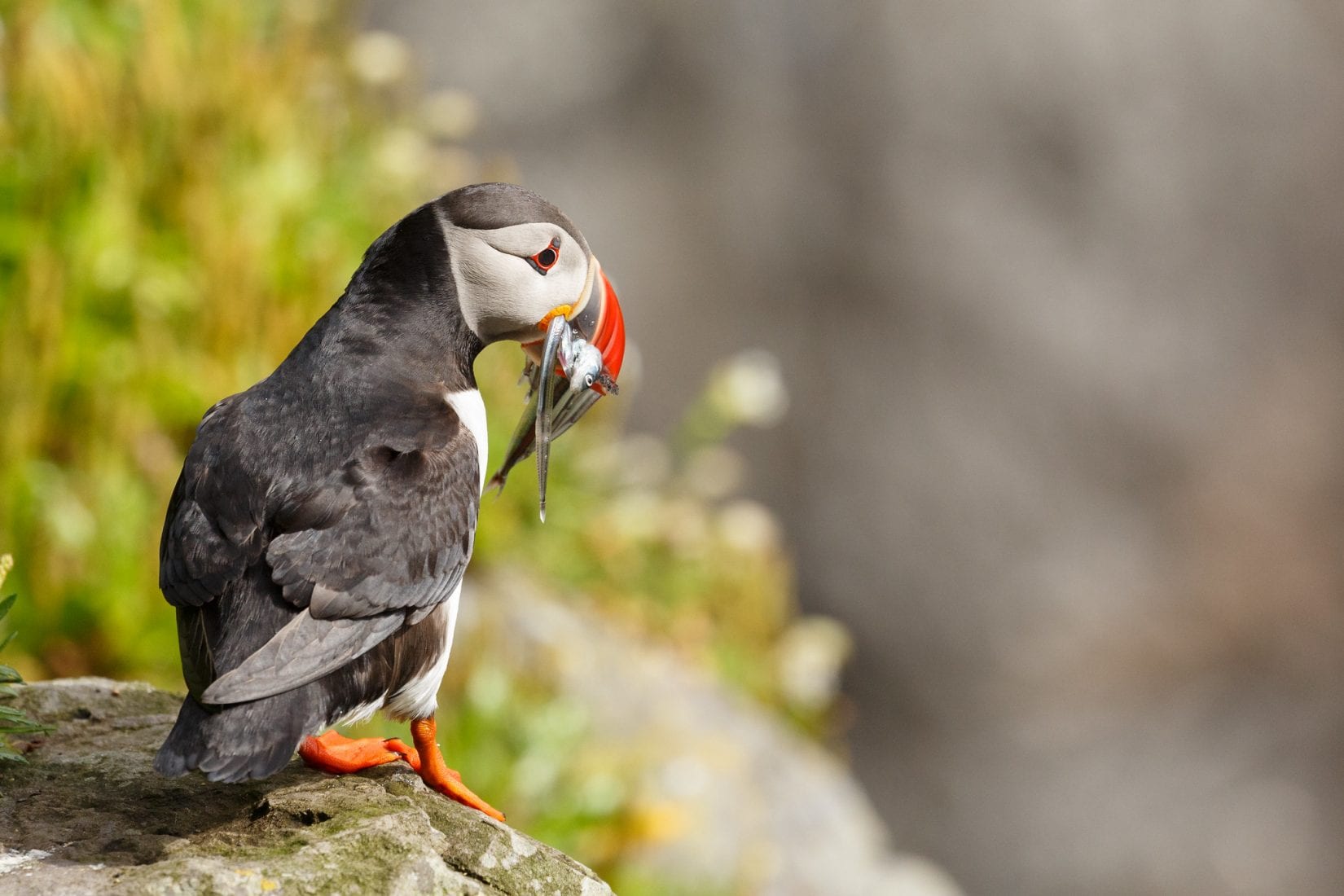
New protected area off Wexford coast is a step forward for vulnerable seabirds
The recent announcement of the new “Seas off Wexford” Special Protection Area (SPA) is certainly news to be welcomed.
For such a designation to be as effective as it can be, it is crucial that strong and effective conservation objectives and management plans are ambitious and that stakeholders are consulted throughout the process. It would be most welcome if the designation of new marine SPAs also led to a new vision for management of Ireland’s entire network of SPAs. BirdWatch Ireland calls on government to ensure that management plans are put in place for SPAs on both land and sea and that a whole-of-government approach is taken to implement them properly to safeguard the future of the birds they are intended to protect.
Minister for Housing, Local Government and Heritage Darragh O’Brien recently designated the new SPA of marine waters off the coast of Wexford which, at over 305,000 hectares, is the largest SPA designated in the history of the state. These waters provide extremely important food sources for seabirds, including Red-listed species such as Puffin, Kittiwake, Common Scoter and many other vulnerable Amber-listed species such as Fulmar, Manx Shearwater, Shag, Cormorant, Black-headed Gull, Lesser Black-backed Gull, Herring Gull, Roseate Tern, Red-throated Diver, Gannet, Common Tern, Little Tern, Sandwich Tern, Mediterranean Gull and Guillemot.



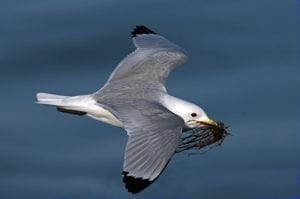
Kittiwake. Photo: Colum Clarke.
Under EU legislation, the Irish government has made a commitment to designate 10% of its waters as protected by 2025, and a total of 30% by 2030. This new designation increases the percentage of Ireland’s marine protected waters to 9.4%, just under the 2025 target. While this is certainly a step in the right direction, many questions remain, primarily, what will “protection” look like in practice? It is paramount that this is made clear in the soon-to-be-published SPA’s conservation objectives, which should detail the activities that will and will not be permitted in the SPA, among other measures. We look forward to reading them shortly. At the same time, BirdWatch Ireland in collaboration with BirdLife Europe and BirdLife International are mapping Ireland’s marine Important Bird Areas according to international and standardised BirdLife International criteria under a project funded by the Flotilla Foundation. This is an important time for our seabirds and it is welcome to see the government’s focus finally on setting out protected areas for them.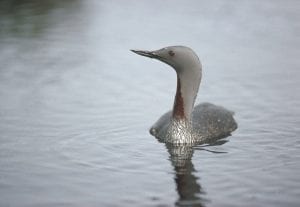
Red-throated Diver. Photo: Chris Gomersall
While the finer details about the Wexford SPA have yet to come to light, it is clear that certain activities will not be permitted in the Wexford SPA. The Minister has issued a Direction in relation to certain activities, which must not be carried out within or close to the SPA, unless consent is lawfully given. The listed activities are reclamation including infilling; blasting, drilling, dredging or otherwise disturbing or removing fossils, rock, minerals, mud, sand, gravel or other sediment; introduction or reintroduction of plants or animals not found in the area; scientific research which involves the removal of biological material; any activity intended to disturb birds; undertaking acoustic surveys in the marine environment and developing or consenting to the development or operation of commercial recreational/ visitor facilities or organised recreational activities.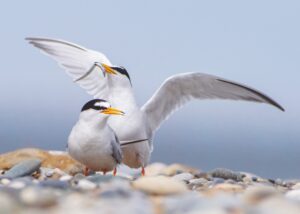
Little Terns.
Together with our partners at Fair Seas – a coalition of Ireland’s leading environmental NGOs and environmental networks of which BirdWatch Ireland is a founding member – we have been calling for the government to meet their targets, but this alone is not enough. More action must be taken in order for us to adequately protect these important marine habitats and the many species that they support. Any move to better protect important habitats for birds is to be welcomed, and this is certainly no different. We are urging the Irish government to be ambitious in their plans for this new SPA and stress the need for focused community engagement in the surrounding areas. We also continue our urgent calls for the publication of the long-awaited Marine Protected Areas (MPA) Bill.